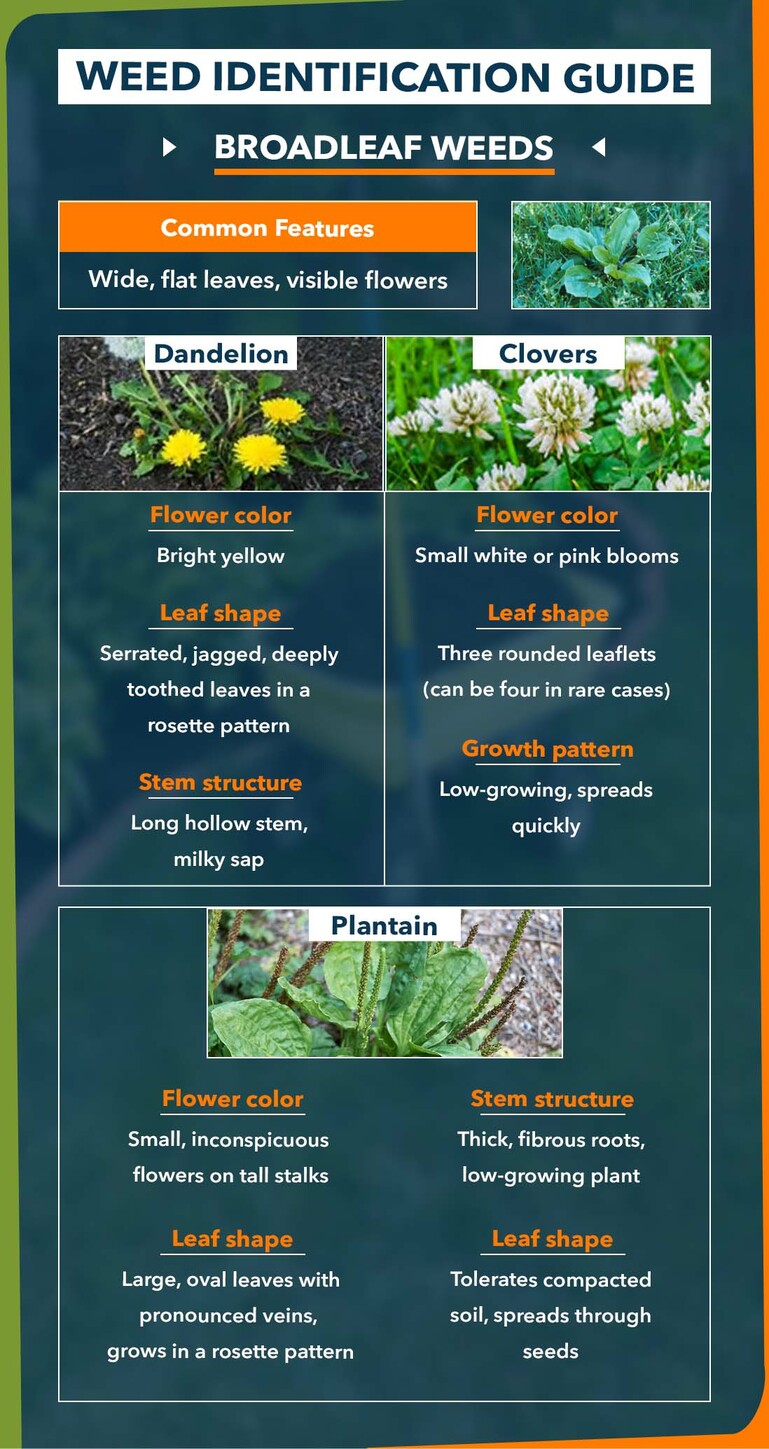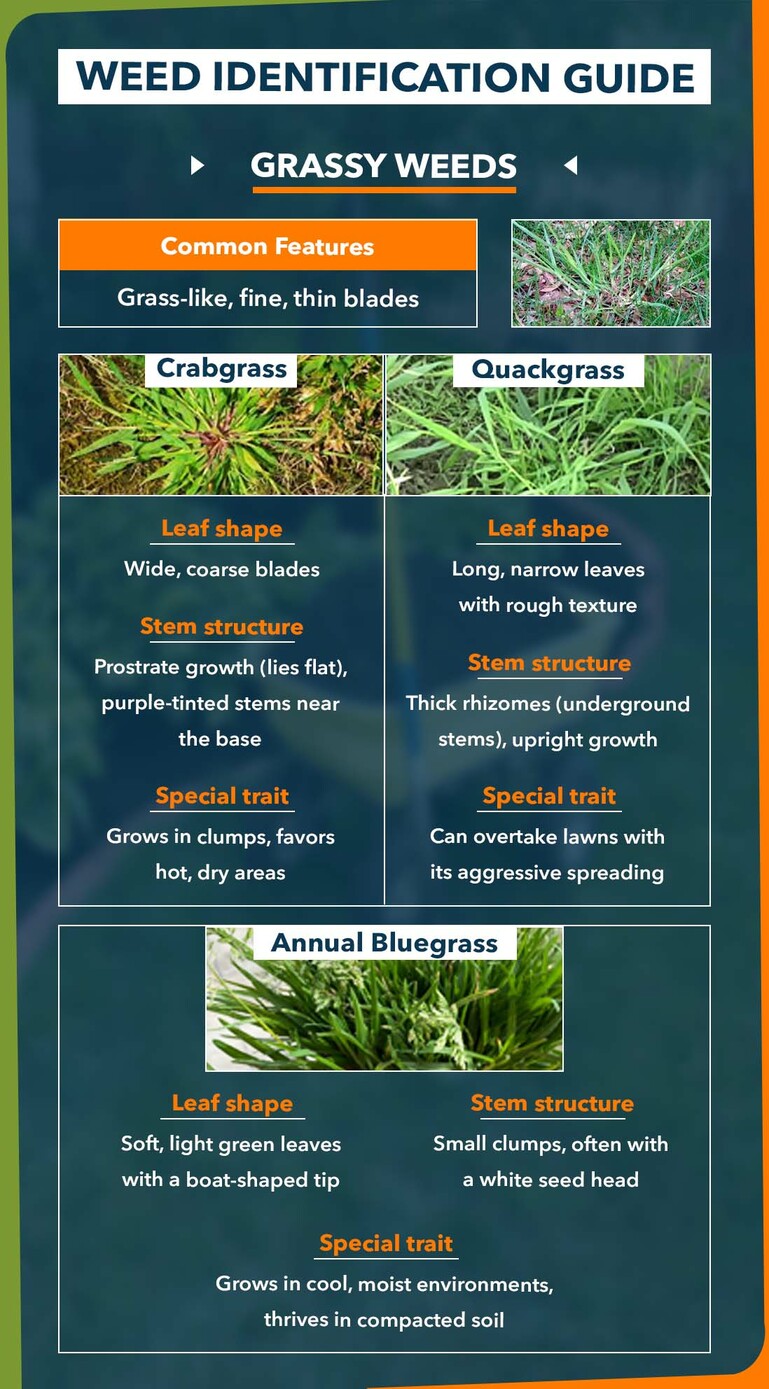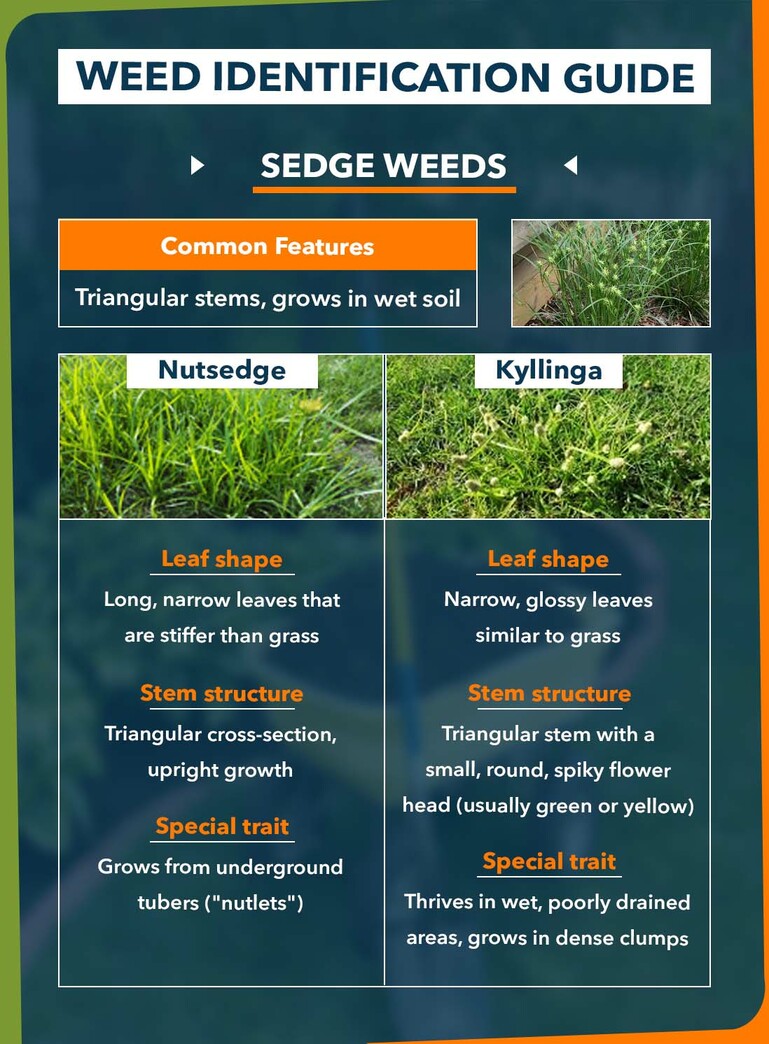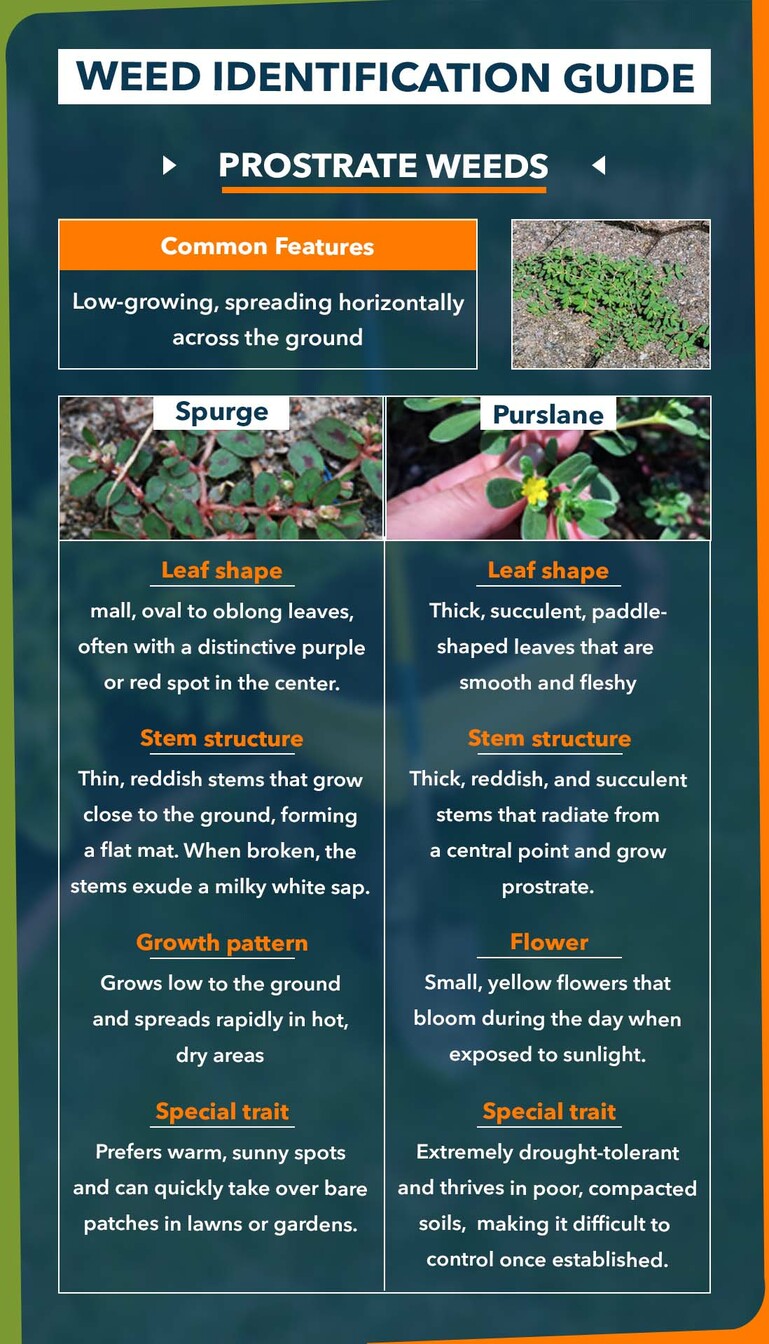Homeowners Share How They Identify Weeds
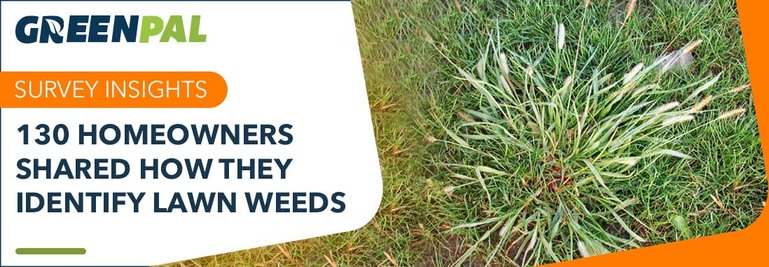
Weeds — you don't want them. Common weed lawns like dandelions and crabgrass plague your lawn. They steal nutrients from plants you want to see. Identifying weeds is important to keeping your lawn and garden in top shape.
We asked 130 homeowners to share the processes and apps they use to identify weeds in their lawns.
Key Takeaways
Popular Weed Identification Methods Homeowners use apps like PictureThis (32%), Google Lens (23%), and iNaturalist (17%) to identify weeds quickly and accurately through photos. |
Common Lawn Weeds Broadleaf weeds (e.g., dandelions, clover), grassy weeds (e.g., crabgrass, quackgrass), and sedges (e.g., nutsedge) are the main types of lawn weeds to look out for. |
Weed Prevention Tips Mowing, fertilizing, watering, overseeding, and applying preemergent herbicides are crucial strategies for preventing weed growth. |
Weed Control Hand-pulling, herbicides, and proper lawn care practices are key to controlling weeds like plantain, spurge, and purslane before they spread. |
Importance of Healthy Lawn Care A well-maintained lawn is your best defense against weeds, reducing the need for intervention. |
Survey Results

PictureThis (32%) – PictureThis was the clear winner, with 41 homeowners commenting on how easy it was to use and how quickly they could identify something via a photo.
Google Lens (23%) – Of the 30 respondents who use Google Lens, the majority appreciated having a single app capable of recognizing a wide range of images and found Google Lens useful in identifying a broad range of weeds.
iNaturalist App (17%) – Used by 22 homeowners, this app was valued for its community aspect.
Ag Extensions (10%) – Local Ag Extension services were trusted by 13 homeowners for region-specific weed identification and advice.
Weedalert.com (8%) – 11 respondents found this site useful for its comprehensive weed database.
Silver Cymbal Weed ID (6%) – The Silver Cymbal Weed ID website helped 8 homeowners identify their lawn weeds.
Reddit (4%) – 5 homeowners visited Reddit to post photographs and receive help from other gardeners.
Common Lawn Weeds: A Guide to Identification and Control
Keeping your lawn healthy and green is difficult when weeds pop up on your lawn's turf. Weeds are those unwelcome guests that grow in your grass and compete with your turf for water, nutrients, and sunlight, often at the expense of your grass. Properly identifying and controlling weeds is the key to a thick green lawn.
Identifying Broadleaf Weeds
![Broadleaf Weeds- Easily identified by their wide, flat leaves]()
The simplest to identify is the broadleaf weed, so named because of its wide, flat leaves. Broadleaf weeds typically stand out from grass because of their large leaf surface and often bright-colored flowers. Here are some of the most common lawn weeds:
Dandelions
Dandelions are unmistakable. People know them right when they see them. The bright yellow flowers; the seeds you can blow on to send them floating into the wind.
To control dandelions, you must mow consistently and use a broadleaf herbicide to keep them back. Broadleaf herbicides won't kill your grass, but you can always pull out dandelions by hand.
Clover
Clover comes in leaves of three with small white or pinkish flowers that grow in clusters. Clover grows fast. It spreads out and creates a matted layer on top of your lawn.
Keeping your lawn well-fed and in good condition will naturally discourage clover. Spot-treat with a broadleaf herbicide or pull patches by hand.
RELATED: Homeowners share how to get rid of weeds
Plantain
If your soil is packed tight, you might have seen a plantain. These weeds love this type of soil. Their broad, flat leaves fan out. Their stalks are their most noticeable characteristic; they're long and straggling, with small seeds visible on the outside.
Get a hoe to dislodge plantain weeds from the compact soil, then pick them out by hand. Applying a preemergent herbicide will help to keep these weeds under control. Good drainage and soil aeration will also keep Plantain weeds at bay.
Identifying Grassy Weeds
![Grassy Weeds - Harder to spot due to their grass-like appearance]()
Grassy weeds are harder to identify because they resemble grass. However, they grow differently and will choke your lawn if you don't control them. Here's how to identify some of the more common grassy weeds and how to prevent them:
Crabgrass
Crabgrass is a tough weed that establishes quickly and survives in various conditions. Heat? No worries. Crabgrass will stay green and stick out like a sore thumb — stealing nutrients from your yellowing grass.
Its blades spread like crab legs, with light-green offshoots that thrive in thin, weak lawns, often cropping up in bare spots.
A thick, healthy lawn is the best way to prevent crabgrass. Apply a preemergent herbicide to prevent crabgrass seeds from germinating, or remove the plants by hand before they can set seed.
RELATED: Homeowners share what they believe is the best way to kill crabgrass
Quackgrass
Quackgrass is a coarse, perennial weed that will terrorize your garden. It sets up shop in sun or shade.
Its flower spikes stick up above other grasses — this weed can grow up to three feet tall. It's easily distinguished from other grasses due to its height and spiky flowers.
The best option to control quackgrass patches is to spot-treat with a non-selective herbicide.
Mulching your garden helps as well.
Annual Bluegrass
According to the University of California, Annual Bluegrass (Poa annua) "is a cool-season grass weed that starts germinating in late summer or fall as soil temperatures fall below 70°F."
Annual Bluegrass grows six to eight inches tall with crinkled leaf blades part way down.
Regular mowing is a good way to manage Bluegrass, but using a pre-emergent herbicide to prevent it can also be effective. Overseeding your lawn with a better-suited grass species will also help keep it in check.
Identifying Sedges and Grass-like Weeds
![Sedge Identification- Look for a triangular stem to spot sedges]()
You can identify sedges by their triangular stems. And while grass-like weeds may share characteristics with turfgrasses, they're not truly grass species. They're weeds through and through. They often bloom small flowers as well.
RELATED: An Illustrated Guide to Controlling Weeds in Your Lawn
Nutsedge or Nutgrass
Nutsedge, also called nutgrass, has a V-shaped stem. Purple and yellow nutsedges appear in lawns, though yellow nutsedges are found more often due to their cold tolerance.
It grows in poorly drained soil and outcompetes turf grass because it grows faster.
To control nutsedge, drain wet areas. Pull it by hand before it has a chance to germinate more. A sedge-selective herbicide can also work.
Kyllinga
Kyllinga is a low-growing sedge weed with small rounded seed heads that often form mats in wet spots. As with nutsedge, improving drainage is helpful. Hand-pulling is an option, but larger infestations may require sedge-specific herbicides.
Focusing on healthy lawn care habits is important to keep Kyllinga in check. Overseeding, in particular, can be helpful.
RELATED: What is overseeding? How to Overseed for Great Results
Identifying Prostrate Weeds
![Creeping Growth-Prostrate weeds grow close to the ground]()
Prostrate weeds grow in a creeping, close-to-the-ground position, making their removal in dense grass difficult to detect.
Spurge
Spurge creeps in and spindles across the ground with small leaves and tiny pinky or reddish flowers. It can grow in dry, compacted soils, making it especially troublesome.
Homeowners can prevent the germination of the seeds by using a pre-emergent herbicide. Pull the smaller infestations by hand before they spread.
Purslane
Purslane has thick, fleshy leaves that grow on the ground and is known for its seed production. Its stems vary in length but can grow up to 12 inches.
Hand-pulling is good if done early, and a pre-emergent herbicide will stop new growth. Mulch can help, too. Be mindful not to use lawn care equipment in areas with Purslane. Once you spread it, it's hard to get rid of.
Tips to Prevent Common Lawn Weeds
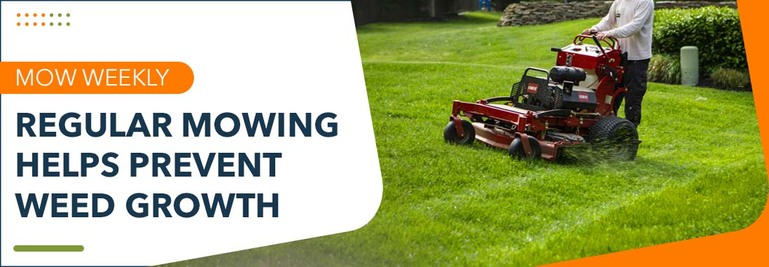
Specific weed control isn't bad, but prevention is the key to keeping a healthy pasture. Here are some key prevention strategies. Mow weekly, fertilize quarterly, and water regularly to provide a thick, healthy turf layer that competes with weeds.
Apply preemergent herbicides in early spring and fall to stop weed seeds from germinating before they take over your garden or yard.
Overseeding is important for weed prevention as well. Grass seeds will fill in bare or thin spots. This coverage helps the desirable species establish themselves while providing less real estate for weeds.
Quick Summary
Identification Method |
Usage by Homeowners |
Key Features |
PictureThis |
32% |
Easy-to-use photo-based identification; quick results |
Google Lens |
23% |
Versatile image recognition; identifies various types of weeds and other plants |
iNaturalist App |
17% |
Community-driven; users help verify plant identifications |
Ag Extensions |
10% |
Region-specific weed identification; trusted for local knowledge |
Weedalert.com |
8% |
Comprehensive weed database; helpful for detailed identification |
Silver Cymbal Weed ID |
6% |
Useful website; identifies lawn weeds with in-depth descriptions |
Reddit |
4% |
Crowdsourced advice; gardeners help with weed identification by sharing photos |
Controlling the most common lawn weeds can be a real challenge; weeds can take over if not controlled. The best way to control weeds and maintain a beautiful and healthy-looking lawn is to know the different types of lawn weeds. Broadleaf, grassy, sedges, and prostrate weeds all have unique characteristics and cause their own issues.
All weeds take away nutrients from your lawn. Keeping your lawn healthy and following best practices is crucial to preventing weeds.





 Share
Share




